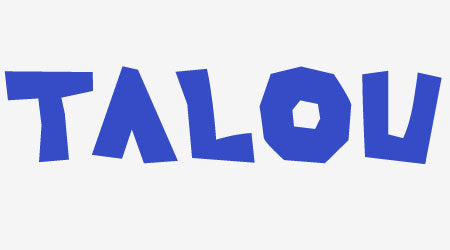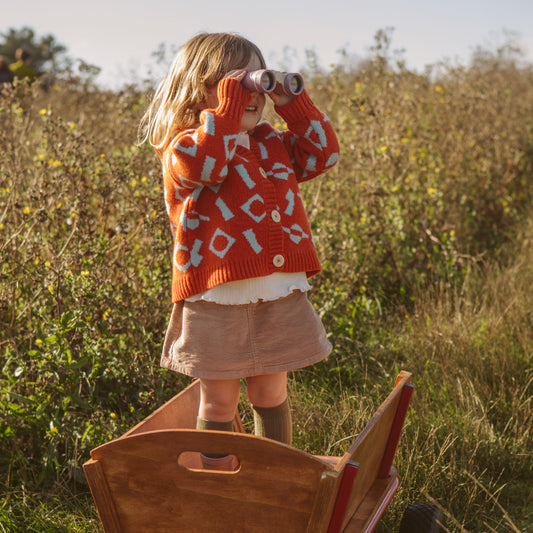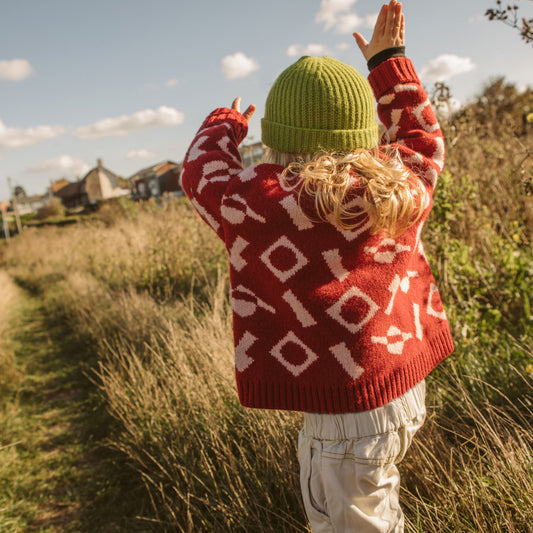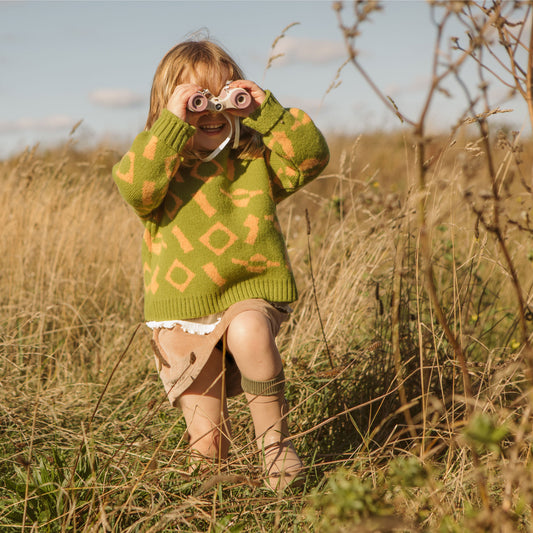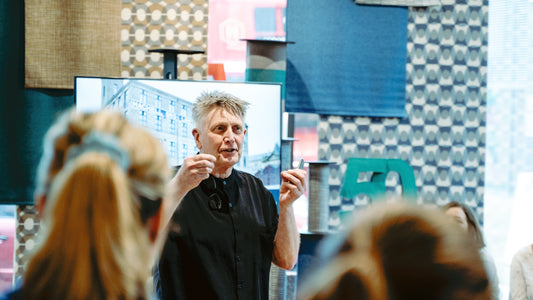At Talou, we’re endlessly inspired by people who use their knowledge and skill to build a better way forward for the fashion industry — and no one embodies that quite like Iinouiio. As the UK’s last traditional Yorkshire wool recycler, they are breathing new life into discarded wool, turning what could be considered “waste” into beautiful, high-quality yarns.
We’re thrilled to be working with them on our pioneering partnership with Mary’s Living & Giving for Save the Children, using their recycled wool to create garments that are kind to both children and the planet.
We visited Iinouiio, based at Camira Yarns in Yorkshire, to get an insight into the work they do there — and to see some of our reclaimed wool ready to spin. In this interview, we chat with John about Iinouiio’s remarkable family history in wool recycling, the journey of reviving this forgotten craft, and the meticulous process that transforms post-consumer and pre-consumer wool into yarn ready for new life.

Can you tell us a bit about the history of wool recycling in Yorkshire, and how it connects to your family history?
Some of my earliest memories as a child (around three or four years old) are of being in the car with my dad as he travelled around woollen mills as a salesman for a shoddy and mungo manufacturer in the Heavy Woollen District of West Yorkshire. My mum worked as a hairdresser, and when the nursery was closed, I’d go along with him. He’d be in some mills for so long that I’d get upset when he finally came back — but my treat was going to the mill he worked for and playing on the bales in the warehouse.
He eventually saved enough to buy a small shoddy manufacturer’s mill in 1970. In those early days, the whole family would work there at weekends and during holidays to help get the business up and running. When I left school in 1977, I joined the business full-time. When he passed away in 1989 — just as we were wondering how to continue, with so many woollen mills closing and the few remaining ones using less reclaimed material — I founded Evergreen in 1990 to tell the world about our trade.
Our work had been kept mostly secret for some 183 years since Benjamin Law first had the idea of taking old clothes to make new cloth around 1807. We brought in scientists to measure the savings in water, electricity, and pollution, and offered our products to brands — most of whom were bewildered by our initiative at the time.
We invested heavily in our own carding and spinning equipment so we could make our own yarns, outsourcing weaving and finishing. We appeared in numerous magazines, on radio, and on television, and sold to various designers and artisans. Our best customer was Esprit, which had the wonderful Ecollection between 1990 and 1995. Sadly, when that closed due to a slump in sales during an economic downturn, we didn’t have enough customers to keep going. I had to leave the trade I loved and find a new career.
Years later, noticing the growing interest in textiles that we had tried to cultivate decades earlier, we returned to our passion in 2019 — determined to finish the job properly this time.
In the small town of Ossett (close to where I grew up), their claim to fame was once having a “rag merchant” on every street. Their town motto, Inutile Utile Ex Arte, translates to “Useless things, by art, made useful” — and I’m so proud to be the last remaining traditional Yorkshire wool recycler, desperate to keep these skills and this knowledge alive by teaching and training others.

What impacted your decision to revive wool recycling in Yorkshire, by founding Iinouiio?
I was prompted by my daughter in 2019 — all my kids had been interested in Evergreen when we ran it between 1990 and 1995. Evergreen had to close because the world wasn’t quite ready to engage with what we had to offer, but after watching a TV programme, my daughter Jenny suggested it was time to return to the trade.
Encouraged by family and shocked to discover that no traditional wool recyclers remained, I submitted a funding bid for machinery, teamed up with Camira, and that collaboration led us to where we are today.
Can you explain to us what recycled wool is? What do the terms pre and post consumer wool mean?
Recycled wool can come from clothing that consumers no longer want (post-consumer), or from waste and by-products created during wool manufacturing (pre-consumer). These materials are fed through a “shredding” machine in a process we call “pulling,” which recovers the fibres ready for carding and spinning. These materials can be blended together or mixed with virgin fibres, if necessary.

What process does post consumer wool go through, in order to become a recycled wool yarn?
First comes cleaning — removing contaminants such as buttons, labels, padding, linings, pocket contents, and zips. Then comes pulling, where fibres are recovered, followed by blending to mix components and ensure uniformity.
Next, we move to carding, which aligns the fibres and prepares them for spinning. Spinning inserts twist to make a yarn, and sometimes twisting follows — where two yarns are twisted together for extra strength. After this, the yarn can be knitted or woven, and finally finished (washed and given any final treatments or finishes).
It’s a labour-intensive process that requires finance, skill, tenacity, people, equipment, and space — but it’s also deeply rewarding.

What impact has Iinouiio had so far and what do you envisage for the future of textile recycling in the UK?
Iinouiio is the only facility of its kind in the UK — the last of the many hundreds that once operated in West Yorkshire. A significant purpose of Iinouiio is to provide a recycling service to UK manufacturers and brands.
We’re not waste merchants — rather, we convert materials at risk of being burned, buried, or downcycled into beautiful new yarns and fabrics.
We’re so grateful to John and the Iinouiio team for welcoming us into the mill and sharing the story behind their craft. Their dedication to preserving heritage skills while championing a more sustainable future for fashion is something we’re deeply proud to be part of.
You can read more about our partnership with Iinouiio and Save the Children here and discover how together, we’re giving discarded materials another chance to shine.
